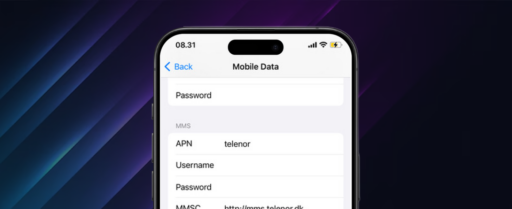eSIM technology has revolutionized our connection to mobile networks. However, like any technology, it raises security concerns and potential vulnerabilities. One common question is, “Can an eSIM be hacked?” In this blog, we’ll explore eSIM safety, identify potential vulnerabilities, and discuss how to protect your digital identity.
What is an eSIM?
An embedded SIM, or eSIM, is a digital SIM integrated directly into a device’s motherboard. This eliminates the need for a physical SIM card and allows users to switch carriers and manage mobile plans remotely without swapping out physical cards. eSIMs are gaining popularity in smartphones, tablets, smartwatches, and other connected devices because they offer flexibility and save space.
Can an eSIM be Hacked?
The short answer is that while eSIMs are generally secure, they are not immune to potential threats. Let’s break down the security aspects:
- Encryption and Secure Storage: eSIMs use encryption to safeguard the data they store, including your mobile network credentials. This encryption prevents unauthorized access and stores your network profiles and personal information in a tamper-resistant secure element. Accessing this data demands significant technical expertise and specialized tools.
- Remote Provisioning Security: Mobile network operators provision eSIMs remotely, updating or switching network profiles over the air. They use secure protocols and encryption for this process, ensuring the transmitted data remains protected. However, if a malicious actor gains access to your network account or intercepts provisioning messages, they might exploit this process.
- Authentication and Verification: When setting up an eSIM, you undergo an authentication process with your carrier, which includes security checks and verification codes sent to your device. While these measures provide protection, phishing attacks or social engineering could trick you into revealing sensitive information.
- Device-Level Security: The security of an eSIM depends on the overall security of the device in which it’s embedded. Malware or other compromises on your device could expose eSIM data. Therefore, it’s crucial to maintain good security practices, such as installing updates, using strong passwords, and avoiding suspicious links.
- Network Provider Vulnerabilities: Vulnerabilities can exist within the network provider’s systems, potentially affecting eSIM users. Opting for reputable and security-conscious network providers can help mitigate these risks.
How to Protect Your eSIM
While eSIMs offer robust security features, it’s still essential to practice good security habits to protect your digital identity:
- Enable Two-Factor Authentication (2FA): Add an extra layer of security by enabling 2FA for any accounts linked to your eSIM. This step helps prevent unauthorized access even if someone compromises your login credentials.
- Monitor Your Accounts: Regularly check your network provider accounts for any suspicious activity. If you spot unusual changes or unauthorized access, contact your provider immediately.
- Update Your Device: Keep your device’s operating system and security software up to date. Manufacturers release updates to address security vulnerabilities and enhance protection, so make sure you install them promptly.
- Be Cautious with Personal Information: Avoid sharing sensitive information, such as verification codes or personal details, through unsecured channels or with unknown contacts. This helps prevent potential data breaches.
- Use a VPN: Encrypt your internet traffic and protect your data from potential interception by using a Virtual Private Network (VPN) when connecting to public or unsecured networks.
How Driffle eSIM Ensures Your Security
When it comes to eSIM security, Driffle stands out by prioritizing your safety and offering robust protection features:
- Enhanced Encryption Driffle eSIM technology employs advanced encryption protocols to secure your data and communication. This ensures that your network profiles and personal information are safeguarded from unauthorized access.
- Secure Provisioning Process Driffle uses secure, industry-standard provisioning methods to ensure that the remote activation and management of your eSIM are protected against interception and tampering.
- Regular Security Updates Driffle is committed to maintaining the highest security standards. You are provided with regular updates and patches to address any emerging vulnerabilities and ensure that the systems are up to date with the latest security practices.
- Data Privacy Driffle respects your privacy and is committed to protecting your personal data. We have implemented stringent privacy policies and practices to ensure that your information is handled securely and in accordance with data protection regulations.
Summary
So, can an eSIM be hacked? eSIM technology offers incredible convenience and flexibility, but like any digital technology, it comes with its own set of security considerations. While eSIMs are designed with robust encryption and secure storage, it’s important to stay vigilant and practice good security habits. With Driffle eSIM, you can enjoy peace of mind knowing that your data and connectivity are protected by advanced security features and dedicated support.
To get more insights on Driffle eSIM and affordable plans, visit here.



